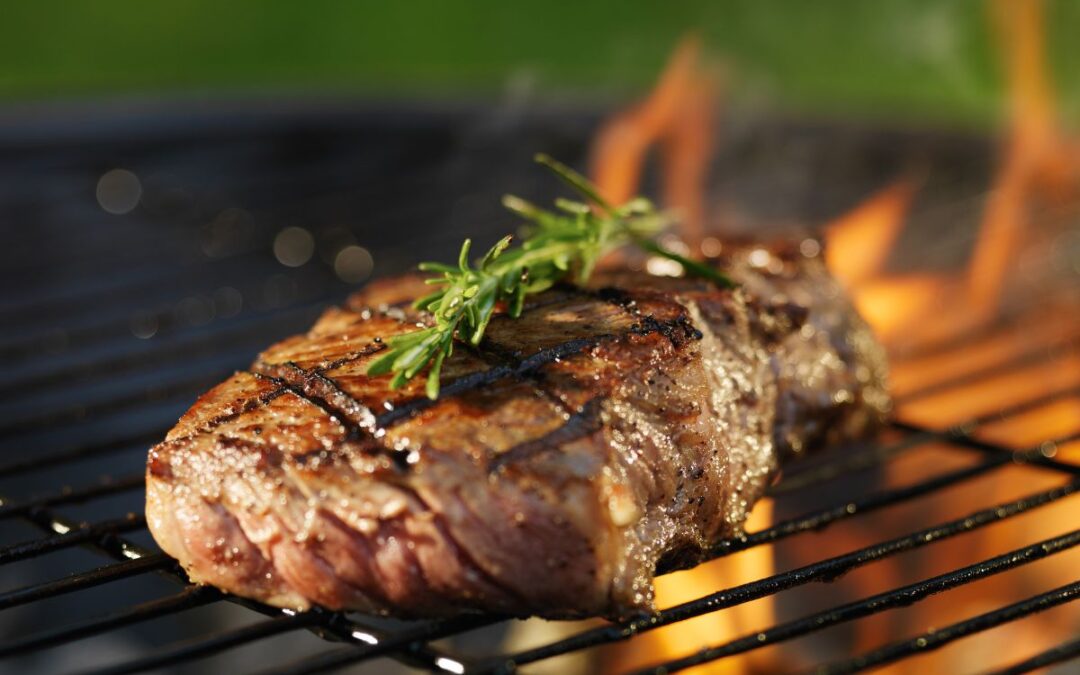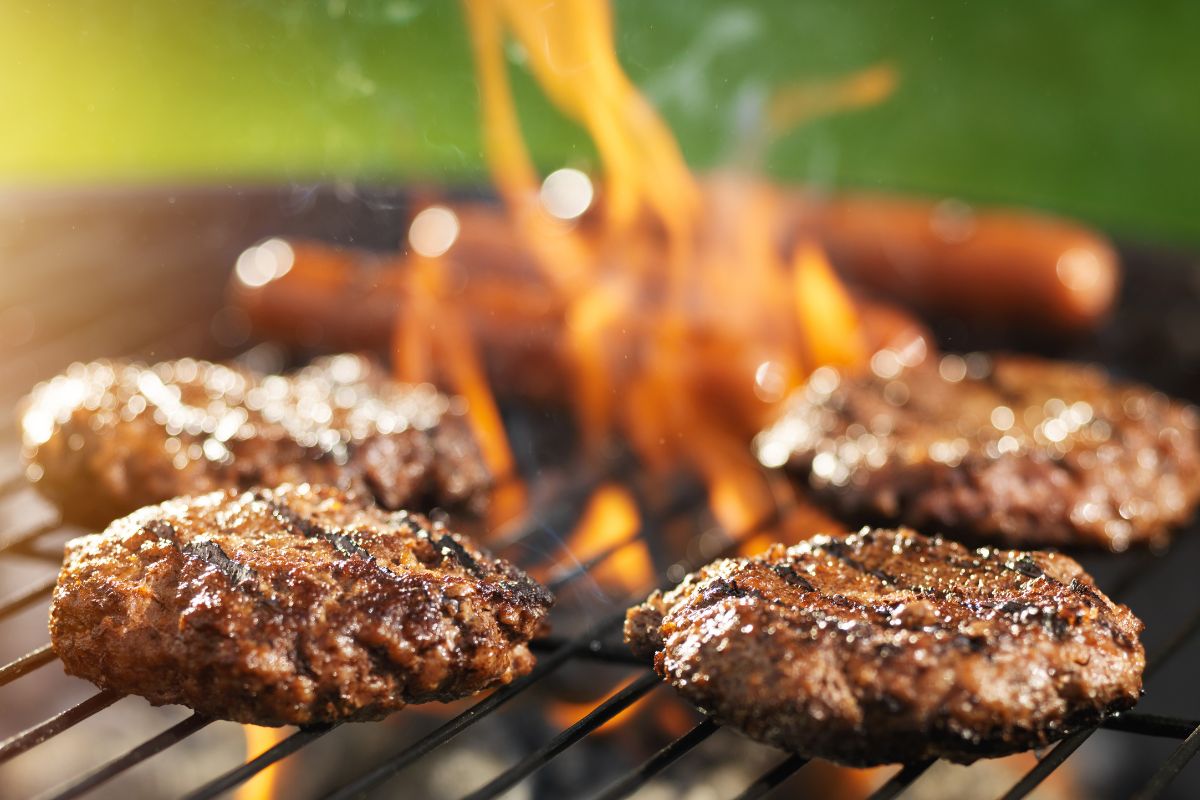When my passion for grillin’ first ignited, I played it pretty fast and loose with temperature, and to be fair, I had some beginner’s luck guessing my way through some easy-going cuts and vegetables, but it wasn’t to last.
If I wasn’t burning my steaks, I was undercooking chicken and pork chops — It was no way to live and no way to grill!
When I pulled my finger out and actually started studying up on approach before cooking my meals, I noticed that 90% of instructionals and recipes called for “medium heat”, which I nodded along with at first, not thinking much of it.
However, when the time came to get to work, I suddenly realized that I had no idea what medium heat translated to in terms of temperature.
So, I did a little more studying, and what I learned about heat levels completely changed the game for me, which is why I’m passing it on to you here today.
Grilling Heat Ranges
The first thing you’ll learn about in this field is heat range. There are three widely accepted thermal ranges when it comes to cooking, and they are as follows:
- High — 400–500 °F
- Medium — 300–400 °F
- Low — 200–300 °F
This gives you a very vague idea of how to grill certain types of meat and vegetables, but it doesn’t really give you any specific clues on how to attain true grilliance, and when it comes down to it, cooking is a form of science and thus requires nuance. So, let’s dig a little deeper, shall we?
Narrowing The Heat Ranges
The ranges listed above can be further broken down into even smaller thermal increments, thereby giving us a more concrete answer to our burning question.
What Is Low Heat?
If the term low heat is used in a recipe or grilling guide, it likely doesn’t mean choose anything between 200 and 300 °F and hope for the best. That 100-degree difference is going to have a huge impact on the final outcome.
What is actually meant by low heat is a very, very low heat, but not quite all the way to the very bottom of the range given earlier.
Generally speaking, “low heat” refers to temperatures between 225 and 250 °F, shrinking our 100-degree shot in the dark to a more definite 25 °F window, and you’ll use this approach for tenderizing tougher meats over long periods.
It’s also the optimal temperature range for most smokes if you’re into that kind of thing.
What Is Medium-Low Heat?
Medium-low heat takes you from the very limit of low heat to the very beginning of the general medium heat range — 250–300 °F. As a slightly larger range, it’s still not quite as helpful as it could be, but when in doubt, do some more research, and if you can’t find your answers elsewhere, it’s up to you to experiment and find your own answers.
As a rule of thumb, start out directly in the middle of this range and observe proceedings closely. Amend the temperature as you go in accordance with your instincts. Within this range, you’re probably not going to see any browning, so it’s best to utilize it after a solid searing session at a much higher temperature.
What Is Medium Heat?
Finally, we arrive at the question of the hour… what is medium heat? Well, the reduced version of this range is said to run between 325 and 375 °F, which, again, is a 50-degree differential, so you may need to do some more research or experimentation. After some practice, you’ll have your own medium-heat grilling process down to a fine art.
This is the range you should use when you want to even out the external and internal cook, and, as mentioned a moment ago, it’s best to start out right in the middle of this limited range, which would be 350 °F. You can then lift or lower the temperature to grill your food up to perfection.
Medium heat is the most versatile of all the temperature ranges, as it’s hot enough to brown and tenderize simultaneously, which, incidentally, makes for a ridiculously easy cooking process. I consider it “the bird-range”, as it’s perfect for grilling up chickens, turkeys, and even geese.
What Is Medium-High Heat?
Medium-high heat is anywhere between 375 and 450 °F, and it’s the perfect range for caramelizing the outside of a hamburger while still achieving a good cook throughout the meat.
Fish fillets also benefit from these lofty temperatures, as do firm vegetables. But beware, you get roughly 15 minutes to nail this approach before that nice sear becomes a burnt crust.
What Is High Heat?
Unless you’re cooking very thin cuts of meat that will cook through after a flash grilling at temperatures of 450 °F and above, you’ll only want to use high heat initially for an immediate sear before cooling things off to cook through the food.
How To Adjust Grill Heat
If you’re working with a gas grill, you’re in luck, as all you have to do is adjust the dial to the desired temperature and sizzle on! For charcoal grills, more skill and experience is required to stabilize your ideal temperature. There are two things to consider: duration and oxygen.
Charcoal burns hottest quite quickly and then starts to mellow just as fast, so if you want to take advantage of high or medium-high heat, don’t wait around. However, with some good vent work, you can control the intensity of the burn using oxygen.
Combined with a quality meat probe and grill thermometer, these techniques will give you the best chances of finding and staying within your desired grilling range.
Final Thoughts
So there you have it — In a very general sense, medium heat is any temperature between 300 and 400 °F, but when it comes to grilling, you should aim for something more precise, between 325 and 375 °F.
If you’re ever unsure how to grill a certain joint, piece of fish, or vegetable, medium heat is a safe option that almost always results in a super tasty final product!


